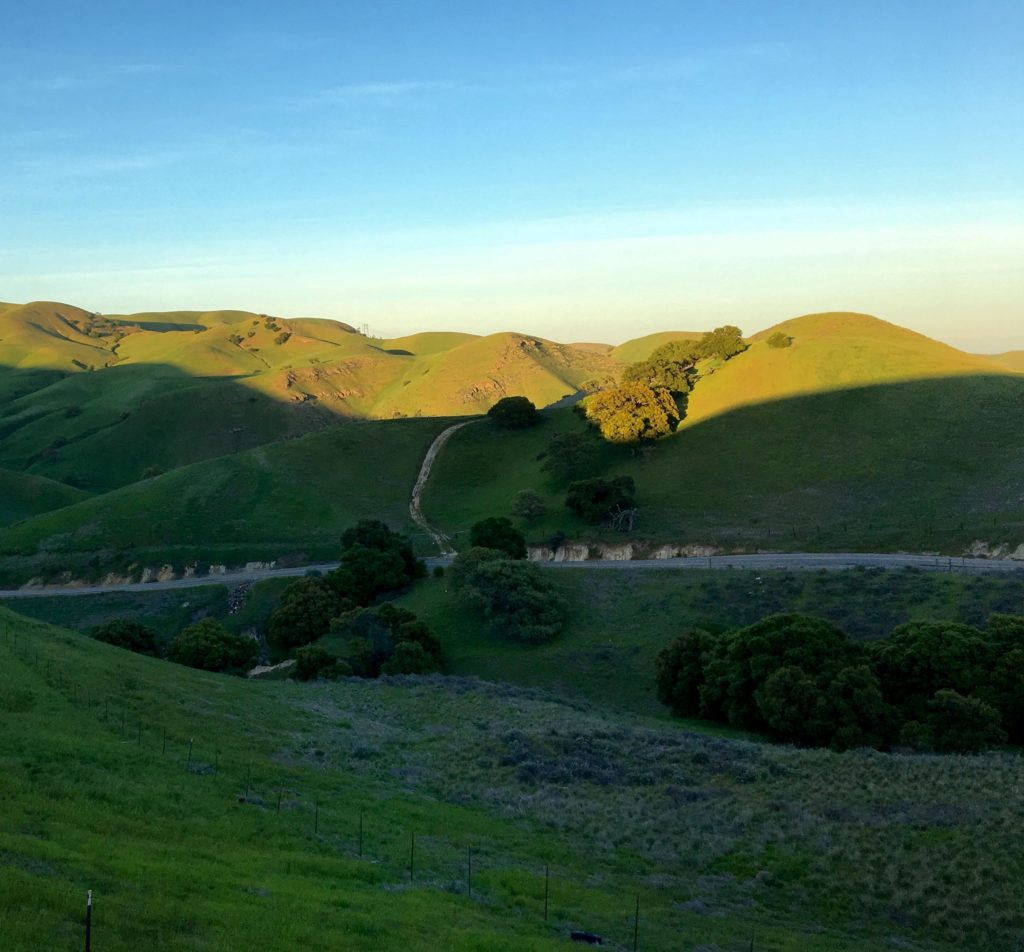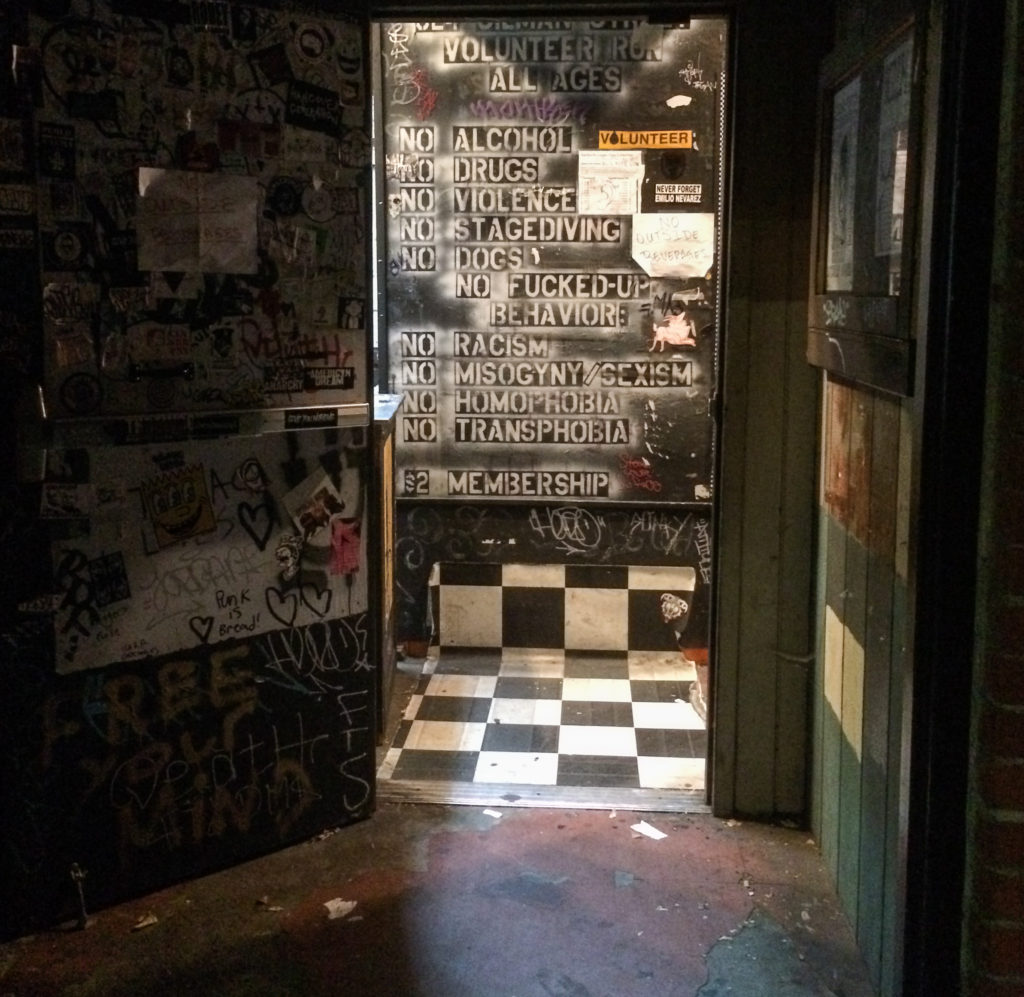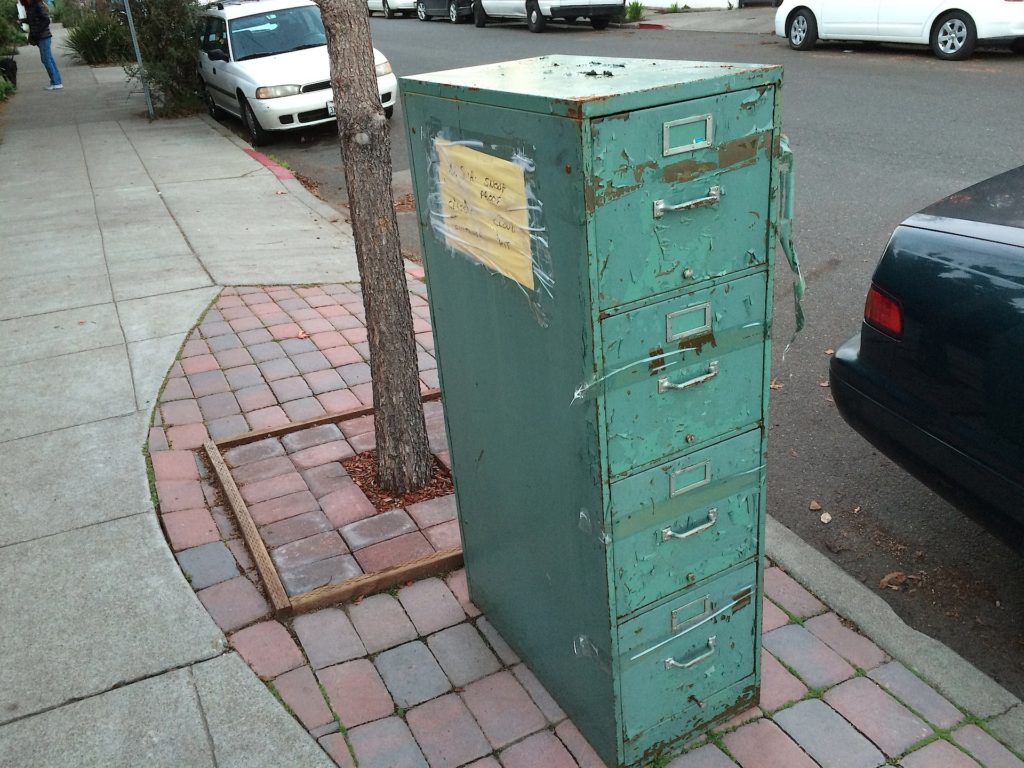So: You’re going to drive down to Los Angeles from the Bay Area on a Friday. To avoid a heavy commute leaving the traffic-strangled San Francisco region — East Bay to be more specific, and Berkeley to be even specific-er — you choose to leave at which hour:
a. Noon
b. 2 p.m.
c. 4:30 p.m., into the teeth of the usual P.M. freeway shitstorm.
If you chose c., you and I think think differently, because I didn’t quite choose to leave at that hour, but leave at that hour I did.
I checked traffic maps before rolling out, and there were long stretches of red and darker red all along the best (actually only) escape routes. No worries, I thought — I will take some side and back roads to make my way over the hills to Interstate 5.
So, I took 580 east through Oakland to Castro Valley, where things were jammed up for the climb over the Dublin Grade to the Tri-Valley area. I could tell from the maps that 580 would be even worse going through Dublin and Livermore and on over Altamont Pass, so I thought I’d use an old cycling route over Palomares Road to Highway 84, which goes through Livermore from Fremont.
Palomares was great, once I found it. Not fast, because it’s a real back road that winds and twists constantly as it climbs the hills and then descends to Highway 84.
Highway 84 was a brilliant idea, though it was bumper to bumper for a long, long way into and through the townlet of Sunol. After that it opened up, and I had just normal non-freeway traffic through Livermore — time now 6:30, or two hours into the trip — and onto Tesla Road and up the last set of Coast Range hills into the Central Valley.

Lots of people use this as an alternate route to the miserable slog on 580 over Altamont, but everyone moved at a spritely pace up the steep, winding road over the top and down into San Joaquin County. In fact, some drivers crossed the line between spriteliness and recklessness. I saw a couple of cars cross the double-yellow line to pass a slower moving vehicle on a nearly blind downhill curve. Well, no one was killed. This time.
Corral Hollow Road, as it’s called on the San Joaquin County end of the road, hooks up with Interstate 580 at a point where it has diverged from I-205 and is usually just screaming along. The speed limit is 70 mph, and if I’m going 75 I feel like kind of a slow poke. But more of that in a minute.
I probably hit 580, which joins Interstate 5 about 10 miles further south, at about 7:20 p.m. It was dusk, and it didn’t make sense to shift over to whatever scenic routes I might devise. The bucolic portion of the drive was over.
***
If I have myself time — something I never do — I probably would stay off I-5 as much as possible. The side roads going down the San Joaquin Valley are many and, at this time of year, and especially after all the rain this year, beautiful. The countryside is green and welcoming in a way you can hardly imagine if you only see the place in the brown haze of summer or the gray of winter.
The other reason one might stay off of I-5 between the Bay Area and L.A. is that it’s one of the most stressful driving experiences you can find. Speed is part of it. If you’re driving 80 — yes, I know, that’s over the posted speed limit, but still quite common — you really have to be on top of your game.
But it’s not really the sheer speed that gets to you. It’s the varied speeds on the two lanes from the Tracy area down to the bottom of the Grapevine.
I-5 is the major truck route between Northern and Southern California. Trucks have a dramatically lower speed limit — 55 mph, and they seem to stick close to it. That means you have a mix of high-speed four-wheelers mixed in with some very slow moving 18-wheelers. But that’s only the beginning of the issue.
Many of my fellow motorists are driving at 70 or so — some just above, some just below. That’s fine. They may live longer, happier lives than the likes of me. But here’s the thing: They aren’t content to drive their rational 70 mph in the right lane of the two lanes available. No. They would much, much rather cruise at their comfortable, non-threatening pace in the left lane.
Yes, it’s true that there will be slower traffic they need to pass. For instance, the trucks I just mentioned. And then they will need to use the left lane. But the notion of completing the pass in some sort of expedited fashion — taking note of traffic approaching from behind, for instance; not getting into the passing lane before you need to; maybe speeding up a little to complete a pass (a technique I was taught in driver’s ed); and then moving over again (another driver’s ed lesson) — is not one that is widely shared based on the behavior one sees on the highway.
The net effect last night was that whenever the river of left-lane traffic encountered an obstacle — a truck or series of trucks in the right lane, say — the left lane would bunch up and slow down, with lots of nonsensical tapping of the brakes as the flow of traffic went from 75 mph, say, down to 60 or 65. It was kind of like NASCAR in super-slow motion.
The rules of the road, I-5 Edition, seem to be these:
–If you see any traffic ahead in the right lane — even that little speck out there in the horizon — you’ll be catching up in five or 10 minutes. Better get over to pass.
–Life is easier in the left lane. You don’t have to worry about getting over to pass. And why is that guy on my bumper?
–Drive with your brights on — all the time. It helps you see the gestures the driver in front of you is making.
–If the slower jerks in the left lane won’t move over, accelerate — accelerate with extreme prejudice — and pass them on the right. And do it over and over and over again.
And in conclusion let me say: No — I am not on a crusade to change the way the rest of the world behaves, there are serious flaws in the way I do things on the road — speeding, right-hand passes — and I don’t give enough credit to all the people I see who do behave in a rational, courteous way.
***
To complete the trip narrative, though: I got to L.A. in one piece, arriving at our downtown hotel at midnight after following the Apple Maps directions — which at one point involved exiting northbound 110 at Dodger Stadium and doing a U-turn back onto the southbound ramp — and getting lost briefly on surface streets.
Anyway. Here I am. Today’s travel will be on public transit.





